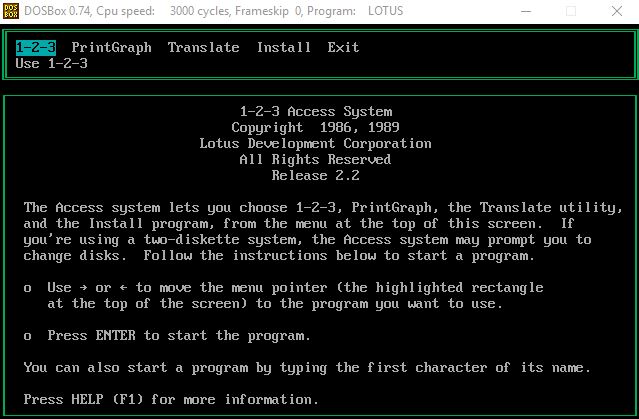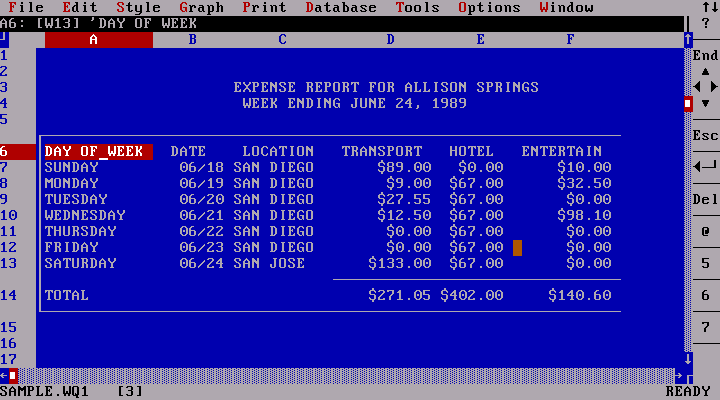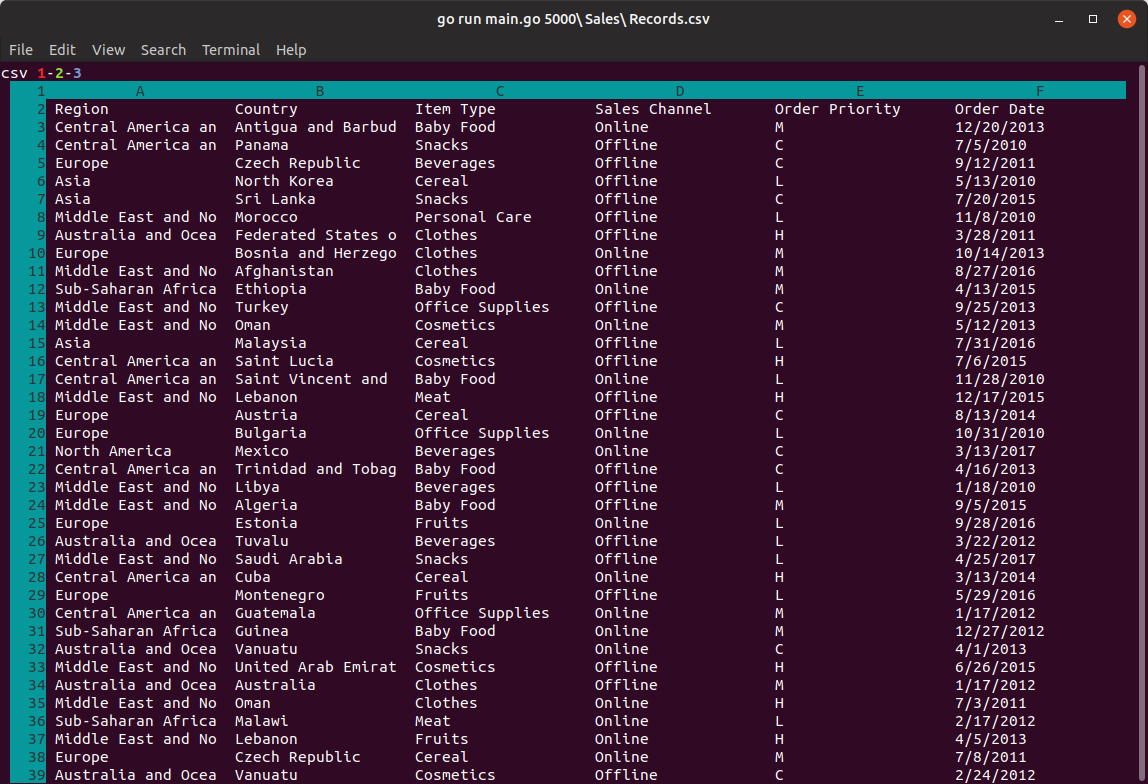
- #Lotus 123 for dos serial#
- #Lotus 123 for dos drivers#
- #Lotus 123 for dos full#
- #Lotus 123 for dos Pc#
#Lotus 123 for dos drivers#
Kit had to be chosen from short hardware compatibility list (and was therefore expensive) and drivers supplied as object files relinked with the kernel.

So adding hardware was not a trivial exercise. It ran DOS apps but could not use DOS drivers – it needed its own. The snag was that CDOS386 was not a DOS it was a descendant of Concurrent CP/M.
#Lotus 123 for dos Pc#
The basic PC design supported 4 RS-232 ports, so you could have an 8MB 386DX with one user on the system console and four users on dumb terminals, all of them able to run even quite demanding DOS apps including fancy stuff like graphical print-preview or a spreadsheet that could draw graphs. The terminal vendors and multiuser OS vendors fought back with colour terminals and then graphical terminals.
#Lotus 123 for dos serial#
This was around the time that a LAN of cheap PC-XT clones was becoming price-competitive with a big high-power 80386DX machine with lots of RAM and a bunch of dumb terminals on a multiport serial card. DR's Concurrent DOS/386 was the premium offering. TBH it was a 2nd string product in its prime, IME.

PC-MOS/386 is FOSS now, but nobody seems to be interested. I am not aware of a native text-mode version of WordPerfect for Linux, but WordPerfect 6 for DOS (the final DOS version) runs very well under DOSemu. It used to be a major pain to install, but there are new scripts as of last year to simplify it: There is no antialiasing, so it looks rather ugly, but it's blazingly fast. I have WordPerfect 8.1 running on Ubuntu 20.04 64-bit.
#Lotus 123 for dos full#
There were free versions of Corel LinuxOS which have a free and slightly cut-down version of WordPerfect, and a paid version with a full unlimited WordPerfect. It was based on Debian with a heavily-modified version of KDE to make it more Windows-like. WordPerfect for Linux made it to version 8, and was bundled with Corel LinuxOS, the first desktop distro to boast a graphical display-settings dialog, for instance. (Generally regarded by WP cognoscenti as the best version: either 4.2 or 5.1 depending who you ask.) WordPerfect's legendarily rich printer support really came into its own for Xenix, which was poor on printer support.

This was a port of the text-mode codebase, roughly equivalent to WordPerfect 5 for DOS.

I installed the SCO Xenix 386 version for several customers. Scholastic Latin is much easier for the modern person to read than classical Latin is it is essentially modern language under a thin disguise. Latin was used only for the purpose of communicating with an audience it was a channel by which you could encode English and someone else could then decode French.īut what you get by applying a set of rigid encoding rules to early modern English isn't all that similar to what you get by training an infant to speak classical Latin and then letting them express themselves in the way that feels natural to them. Isaac Newton was also, kind of, writing in his own native language. Cicero was writing in his own native language, and he used the wordings that came to him. You might think so, but reading scholastic Latin from the 1700s is radically different from reading classical Latin from the -100s. in the same way that it's useful to use a dead language like Latin nowadays it's not changing so there's sort of a bit of "equality" to it, for want of a better word.


 0 kommentar(er)
0 kommentar(er)
